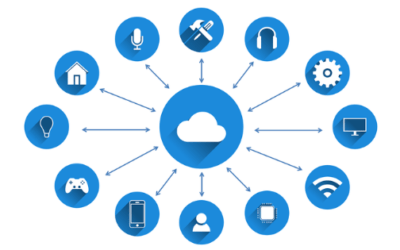We can best define Biometric data as the information derived from the biometric process. It usually consists of basic information such as name, address, age, sex, and facial features. Biometric measures were first used to keep track of criminal records but these have changed alongside with the improvement of technology. With the rise of technology, the biometric process has become the norm in taking information rather than the usual paper documentation. Due to technological innovation, almost every industry now collects biometric data. This is particularly helpful for government agencies to streamline all the information especially for official IDs, passports, immigration documents, and border control processes, as well as criminal records. Biometric data provides a secure form of identification and the information gathered is proved to be one of a kind.
The most common way to gather biometric information is through fingerprint access. Because each person possesses a unique fingerprint, it is easier to keep track of the information without duplication. Used commonly in border control, fingerprint access control has now been developed to be used in cellular phones, door access, and attendance systems. This provides an easier identification solution and more secure access to foreign borders, mobile phone information, and venue entries. However, as technology improves, more challenges arise and the methods for gathering more data points become more complicated. Today, aside from fingerprint access control, the development of facial, voice, and retina biometric systems are in development. As the years go by, biometric data points become more unique and more detailed.
However, despite the collection of biometric data, there are clear interoperability challenges. Each biometric data has its own unique entry point and since it was designed to fit the requirements of one client. The worst case is it may not be appropriate to be used by another company as one may only get fingerprint data but what the other one needs is facial recognition data. Since there are no fixed laws or guidelines on how to collect biometric data, each individual’s data may not be systematized and it will be hard for one to implement the basic biometric information needed since each one has a different data point requirement. For example, if the police system all over the world would have a biometric-based sharing information system, it would be easier to track down criminals. In order to do that, they should streamline all the information needed as each police agency in every country records several data points as required by their own respective laws. Moreover, biometric interoperability also addressed the question especially in the gaps of information collection and how the biometric system can handle this big chunk of data. In order to succeed in biometric interoperability, a better database and interoperability system must be made to ensure that there is only a minimal margin of error. In this way, biometric systems can still be trusted and still be a higher form of security.
But one of the greatest challenges in the biometric age is biometric security. Until now, there are still risks of hacking biometric data and this information is used in fraud, hacking, and other illegal activities. The risk of hacking and the obvious lack of security makes people uneasy about the use of biometrics. However, since every institution uses this kind of technology, they have no choice but to comply despite the risk of putting their own biometric information in danger. It is important to note that surrendering biometrics data into a biometric system is somewhat surrendering one’s privacy. One’s data, if not used properly, could be used against you – the biometric data owner. However, it may be hard to go against the system since there are no systematized laws to protect you and your data. Once the data is surrendered to the system, the issue of ownership also becomes a risk. It may be your own personal data but since a certain system is storing your own data, they would think that they are liable to be the data owners. This perhaps may be the biggest issue on how companies or governments use one’s personal data, posing a great risk to the individual.
Perhaps the best solution to this problem is to provide a better system with clear biometric standards so that users will trust the process and voluntarily give their information. A better biometric system with better security will protect both parties and curb biometric issues. Being secured that your data is guarded and kept in a safe space will empower the data owners to be more trusting to agencies. Before surrendering your data, one must be provided by a clear clause on how the data will be used. This added layer will provide more security to the data owner.
The rise of technology provides security as well as possesses a threat to our daily lives. But with a clear motive on the use of data and a more secure system to store the information, biometric interoperability and biometric data usage will be a lot more convenient for everyone.




0 Comments